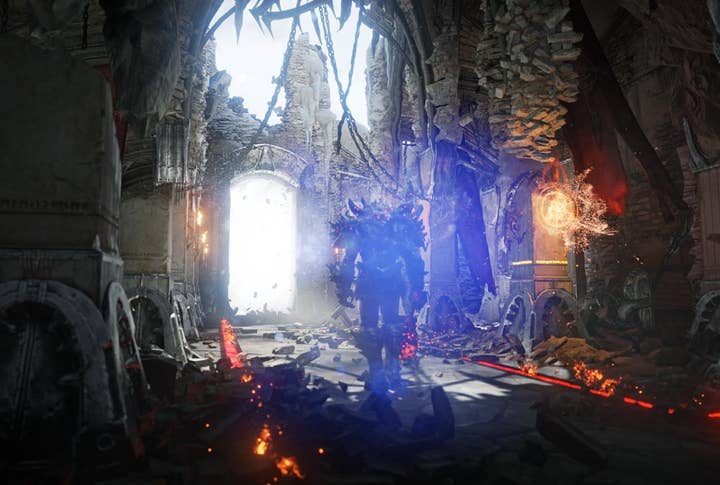Unreal Engine 4 illuminates next-gen at E3
Microsoft and Sony may not be talking about next-gen just yet, but Epic is demonstrating it with UE4
It's looking more and more likely that next year's E3 will be all about next-gen, with new consoles from Microsoft and/or Sony being unveiled for a likely holiday 2013 launch. Publishers are saving new IP for the next round of hardware, and as usual, Epic Games' Unreal technology is going to power many new titles for the next-gen systems. Today at E3 we got our first glimpse of what next-gen could look like with Unreal Engine 4.
During the demonstration led by Alan Willard, senior technical artist and designer, Epic showed off highly detailed environments in a fantasy RPG type setting. The key to how beautiful every object, character and landscape looked is the new engine's special illumination techniques. You don't quite realize how crucial lighting in a video game can be until you see how it literally affects every pixel in a scene.
Without a doubt, illumination appears to be the differentiator (at least in this demo) for what Epic is envisioning with next-gen graphics. Every object and every material in an environment is rendered with surfaces that have varying degrees of reflection and the light bouncing off one object will affect every other object. The more specular something is, the more light will bounce off it and change how the rest of the environment around it looks. Even something like a red carpet on the floor will produce a more subtle reflection on a room.

Epic displayed a room with over a million particles in it alone, and everything is fully dynamic, so as a spherical object, for example, is moved around an environment the lighting conditions will automatically change depending on where it's placed.
Epic also demonstrated an interesting lighting feature that replicates the effect of a human being's eye adapting to a dark room after being in the light. It's a subtle touch and shows how lighting in certain conditions can add to the realism. It's certainly easy to imagine being in a dark dungeon with very little light and no torch in an RPG - and this would render that type of environment quite nicely.
Of course, the key for Epic and developers looking to create next-gen games is the ease of use and speed at which changes can be made in Unreal Engine 4. With improvements to the toolset, event graph, construction script and more, Willard emphasized that iteration time on a project is "incredibly fast."
Epic showed how everything is running in real-time in the editor and designers can literally play the game and make changes to it in the editor at the same time. You can make changes to the source code, script changes and more all while actually running the game. And then when the code is done compiling, you'll see the changes you made take place in-game right away.
In a Q&A near the end of the presentation, Willard stressed that Epic is still waiting on the final specs on next-gen hardware from Microsoft and Sony, so we can't assume that what we saw is representative of what games will look like on the next consoles, but it is what Epic is pushing for. Additionally, Epic noted that UE4 will be fairly scalable for PCs of differing power, and interestingly when Willard was asked about the possibility of UE4 technology scaling down to mobile platforms, he answered, "Scaling down to mobile is an interesting question - will it be down?"
Clearly, Epic is big on mobile and the technology in smartphones and tablets iterates at a much, much faster pace than consoles. Judging by Infinity Blade and how good Unreal tech already looks on iOS, Epic is definitely prepared for that future too.

